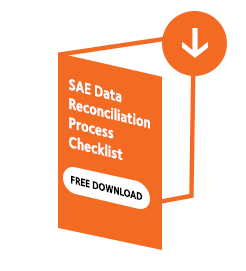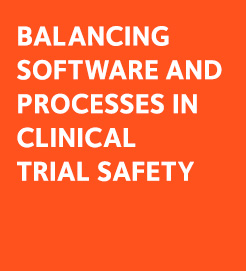In recent years, Data safety Monitoring Boards (DSMB) have become a standard requirement for clinical trials. Growing concern about the impartiality of data review by sponsors alone has led health authorities and pharmaceutical companies to implement independent DSMBs. Serious Adverse Events (SAE) are a key element of the DSMB review and must be reconciled as soon as possible to avoid delays and errors in the DSMB advice. Prompt, robust continuous SAE data reconciliation is therefore a key support factor to patient safety monitoring.
Last month, two major phase 3 clinical trials investigating vaccines against the SARS-CoV-2 virus were temporarily halted because of Suspected Unexpected Serious Adverse Reactions (SUSAR). These are reported as a special category of SAE and are promptly reviewed both by health authorities and by the DSMB. Sponsor companies and experts worldwide explained to an anxious public that this is a normal procedure. Indeed, both clinical trials were able to resume following the DSMB recommendation. So, what exactly is the mission of a Data and Safety Monitoring Board and how does it work?
“The Data and Safety Monitoring Board1 is an independent group of experts… The primary responsibilities of the DSMB are to 1) periodically review and evaluate the accumulated study data for participant safety, study conduct and progress, and, when appropriate, efficacy, and 2) make recommendations … concerning the continuation, modification, or termination of the trial… The membership of the DSMB should reflect the disciplines and medical … specialties necessary to interpret the data from the clinical trial and to fully evaluate participant safety… During the trial, the DSMB should review cumulative study data to evaluate safety, study conduct, and scientific validity and integrity of the trial.”2
In order to carry out their mission, DSMB members must obtain extensive information regarding the protocol, the investigational drug or device and the trial conduct. They receive regular reports from the trial sponsor, including all safety data, for periodic review. Specific flags trigger unscheduled DSMB review and meetings to provide recommendations as to whether the study should continue without change, be modified, or be terminated. SAE reports play a major role in these reviews and making sure that the information provided is complete and accurate is the sponsor’s responsibility. SAE data reconciliation can increase the quality of SAE data by verifying and resolving any discrepancies between the data recorded in the safety and clinical databases and thus provide the DSMB with reliable information. Continuous SAE data reconciliation is therefore paramount for supporting the mission of the DSMB and ultimately serving the safety of patients participating in clinical trials.
In the example cited above, the study teams had to provide a massive amount of data to the Data and Safety Monitoring Boards in record time. Among these were safety data pertaining to the SUSARs and it was of course of outmost importance that the data be complete and accurate. Close collaboration between the safety and the clinical teams is paramount in such cases and tools allowing a fast and accurate reconciliation may prove valuable in the circumstances.
______________________
1Also called Data Safety Monitoring Board, Independent Data Monitoring Committee, Data Monitoring Committee or Data Review Board
2NIH Data and Safety Monitoring Board (DSMB) Guidelines
DOWNLOAD NOW THE FREE SAE RECONCILIATION HANDBOOK
The Manual / Reference Book with all the topics related to the Safety Data Reconciliation Management.







